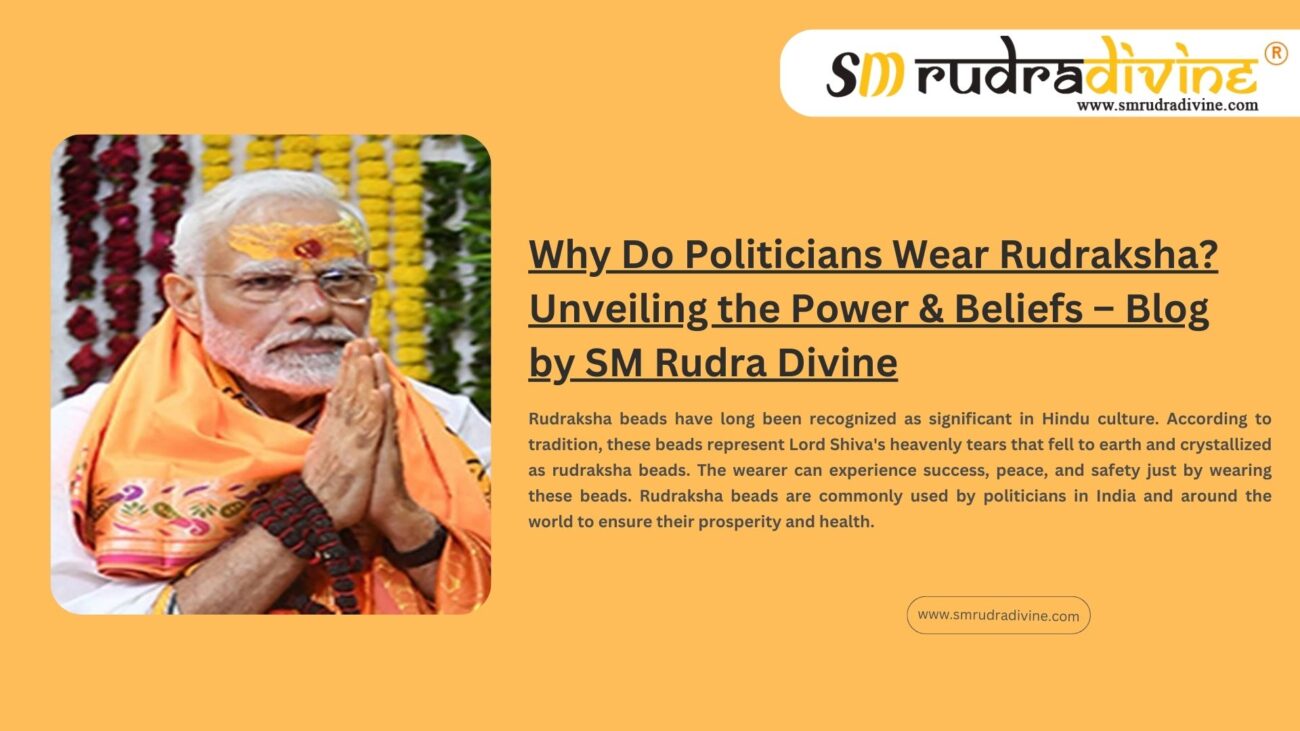- 1 Mukhi Rudraksha
- 2 Mukhi Rudraksha
- 3 Mukhi Rudraksha
- 4 Mukhi Rudraksha
- 5 Mukhi Rudraksha
- 6 Mukhi Rudraksha
- 7 Mukhi Rudraksha
- 8 Mukhi Rudraksha
- 9 Mukhi Rudraksha
- 10 Mukhi Rudraksha
- 11 Mukhi Rudraksha
- 12 Mukhi Rudraksha
- 13 Mukhi Rudraksha
- 14 Mukhi Rudraksha
- 15 Mukhi Rudraksha
- 16 Mukhi Rudraksha
- 17 Mukhi Rudraksha
- 18 Mukhi Rudraksha
- 19 Mukhi Rudraksha
- 20 Mukhi Rudraksha
- 21 Mukhi Rudraksha
Rudraksha vs Gemstones Understanding Their Powers

SM Rudra Divine is a trusted Indian source for authentic spiritual items. According to its philosophy, Rudraksha beads (from 1 Mukhi to 21 Mukhi) each have unique benefits. In this blog we compare Rudraksha beads and gemstones how they work and which may suit you best. We’ll cover the types of Rudraksha (natural vs “hybrid”), key Rudraksha varieties, gemstone types (Navratna and substitutes), and the main differences in their effects. Ultimately, the choice depends on your beliefs (Vedic or Western astrology) and your guidance from experts.
Types of Rudraksha Natural (Nepali) vs Hybrid
Nepali (Authentic) Rudraksha: These beads come from Elaeocarpus ganitrus trees in the Himalayas (especially Nepal). Nepali Rudraksha are prized for their clarity, well-defined mukhis (faces) and deep spiritual potency. Wearers believe they strengthen meditation, inner balance and protection. In Ayurveda and tradition, genuine Rudraksha are thought to balance the body’s energy channels and reduce stress.
Javanese (Indonesian) Rudraksha: Found in Java, these beads are larger and often smoother. They are sometimes preferred for jewelry due to size and look, but have slightly milder energy than the Himalayan seed.
Hybrid (Artificial) Rudraksha: In recent years, low-cost beads (often from plantations in China/Thailand/HK) have appeared as “Rudraksha.” These are typically treated or carved seeds (sometimes called Bodhi or Marcasite beads) sold for fashion. Warning: such hybrid Rudraksha do not carry real spiritual power. They are not true Himalayan seeds and have no genuine therapeutic value. In short, Nepalese/Indonesian beads are authentic; any cheaply made “hybrid” bead is purely ornamental.
Major Rudraksha Varieties (By Mukhi Faces)
Rudraksha beads are classified by the number of mukhis (faces or natural clefts) on them, from 1 up to 21. Each mukhi count has a traditional significance:
1 Mukhi: Extremely rare, symbolizes Lord Shiva himself. Believed to grant deep spiritual insight and enlightenment.
2 Mukhi: Represents the Moon (Chandra) – often worn by married couples to promote harmony.
3 Mukhi: Mars (Mangal) energy – courage and assertiveness.
4 Mukhi: Mercury (Budh) – intellect and communication.
5 Mukhi: (Panchmukhi) the most common bead, associated with Jupiter (Guru). Promotes overall well-being, memory and focus.
7 Mukhi: Saturn (Shani) – one of the most powerful, but only for those it suits (wealth, discipline).
… and so on up to 21. In addition, there are special forms: Gauri Shankar (two naturally joined beads) promotes love and harmony, Trijuti (three joined) offers powerful energy for balance, Ganesh (with a trunk-like protrusion) draws Ganesha’s blessings, etc. (For a complete list see SM Rudra Divine’s product pages.) Each Rudraksha type is said to align with different deities or planets.
Why Choose Natural (Nepali) Rudraksha Over Hybrid
Authentic Nepali Rudraksha are valued for genuine energy and blessings. They grow slowly in nature, giving them uniform shape and clear mukhis. Practitioners feel authentic beads enhance meditation, concentration and inner balance. By contrast, hybrid or artificial beads are mass-made and lack the same vibrational quality. In short, a true Nepali or Javanese Rudraksha is believed to emit subtle healing energy, whereas a hybrid or Bodhi seed is only a neutral fashion item.
SM Rudra Divine emphasizes this: they sell only certified natural Rudraksha from Nepal and Indonesia. Their catalog notes these beads “are known for their spiritual significance” and “enhancing concentration, peace, and prosperity.” For real benefits, always choose natural authenticated Rudraksha the peace of mind is worth it.
Types of Gemstones (Navratna and Substitutes)
In Vedic tradition, gemstones are used to channel planetary energies. The Navratna (“nine gems”) are the principal stones linked to the Navagraha (nine planets). They typically include:
Ruby (Manikya) – Sun
Pearl (Moti) – Moon
Red Coral (Moonga) – Mars
Emerald (Panna) – Mercury
Yellow Sapphire (Pukhraj) – Jupiter
Diamond (Heera) – Venus
Blue Sapphire (Neelam) – Saturn
Hessonite (Gomed) – Rahu (Ascending lunar node)
Cat’s Eye (Lehsunia) – Ketu (Descending lunar node)
These nine precious gems are considered highly powerful. Each gemstone is believed to absorb and transmit the energy of its planet, bringing balance and remedial effects.
Upratna (Substitute) Gems: Because Navratna stones can be rare or costly, tradition allows substitute gems (semi-precious stones) with similar qualities. For example, blue sapphire’s substitute might be iolite or lapis lazuli; emerald’s substitutes include peridot or green tourmaline. Substitutes provide gentler and often temporary effects. They must usually be larger (more carats) than the primary gem to be effective.
What is the Main Differences Rudraksha vs Gemstone
The key distinction is how they work and their risk of side-effects:
Energy Source: Gemstones work by balancing planetary influences in your chart. Each gem is chosen to strengthen a specific planet’s energy. By contrast, Rudraksha work by raising your own inner energy and focus. Rudraksha aren’t tied to a birth chart. They align mind-body-spirit, fostering calmness, meditation and spiritual growth.
Side Effects: Gemstones must be matched correctly to your astrological needs. Wearing the wrong gemstone one not suited to your horoscope can have negative side-effects. Rudraksha beads, on the other hand, are generally safe for anyone. They are not expected to cause harm even if someone wears them by mistake. In short: a wrong gem can backfire, whereas a Rudraksha is essentially neutral-to-positive for all.
Use and Symbolism: Gems are often set in rings or jewelry and are valued for beauty as well as energy. Rudraksha are natural seed beads, usually worn on malas (necklaces or bracelets) for chanting and prayer. Each Rudraksha’s number of faces carries symbolic meaning in Hindu lore.
Which is Best for You?
It depends on your background and goals. Western astrology typically prescribes birthstones by month (zodiac), whereas Vedic astrology analyzes the entire birth chart (graha positions) and prescribes gems for weak planets. For example, a Western approach might say “wear sapphire if your birth month is September,” whereas Vedic Jyotish says “wear Blue Sapphire specifically if Saturn is afflicted in your chart.”
Many people combine both remedies. A gemstone with Rudraksha combination can balance energies and enhance overall benefit. For instance, you might wear the astrological gem recommended by your advisor, and also wear a Rudraksha mala that resonates with you spiritually. Ultimately, the “best” choice aligns with your faith and guidance: whether you believe in Western zodiac or Vedic Navagraha, consult a trusted astrologer or SM Rudra Divine’s experts to pick the right gem and Rudraksha.
Is Pyrite a Gemstone?
Pyrite (“fool’s gold”) is an iron sulfide mineral not a true gemstone though it’s often used decoratively in jewelry. Pyrite has a shiny brass-gold color (hence “fool’s gold”) and indeed forms real crystals. It is not one of the traditional astrological gemstones, but crystal healers do value its energy: some call it “Healer’s Gold” and use it for focus, abundance and protection.
So, to answer succinctly: Pyrite is not a gemstone in the classical sense, but an energetic mineral. It has “superior energy” only in the metaphysical sense given by some crystal enthusiasts. It is inexpensive and brittle (hardness ~6.5), so it’s mainly for costume jewelry or crystal healing. It can be worn as a decorative “lucky stone,” but it is not a certified precious/semiprecious gemstone in astrology.
Conclusion
Natural Nepali/Indonesian Rudraksha beads carry positive spiritual energy and are safe for anyone. Gemstones channel specific planetary forces and can be powerful but must be chosen carefully. The best choice depends on your astrological tradition and needs many opt for both. In all cases, consult an expert. SM Rudra Divine (a trusted retailer) offers certified Rudraksha and can guide you, ensuring you get authentic beads and proper advice.













